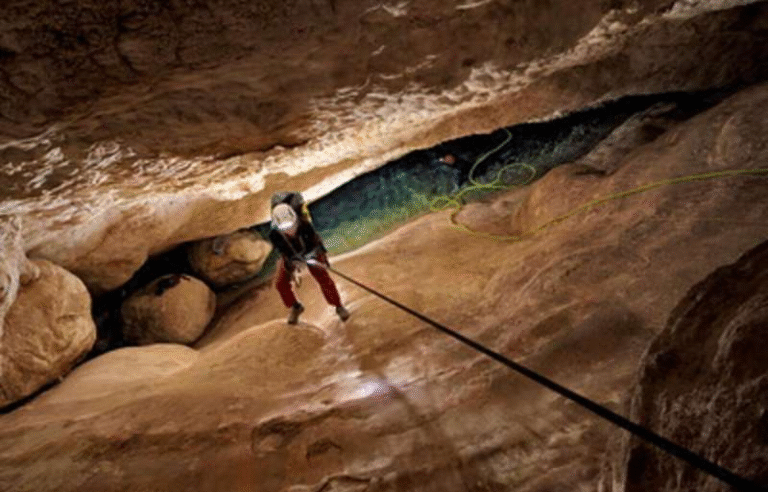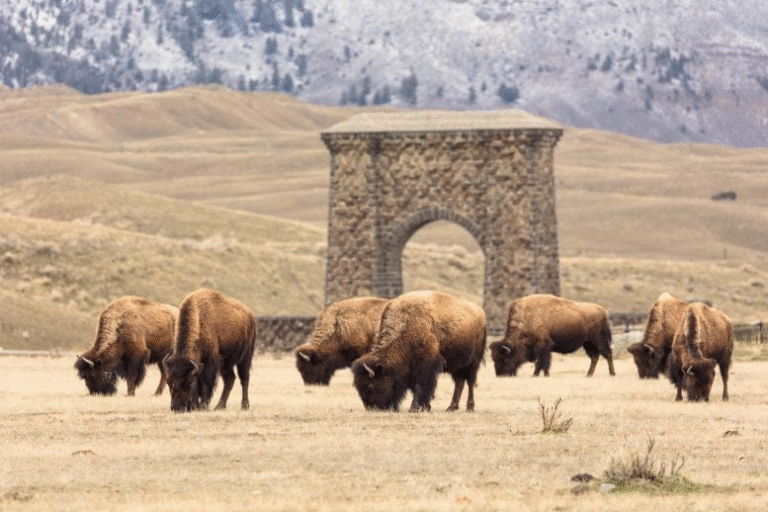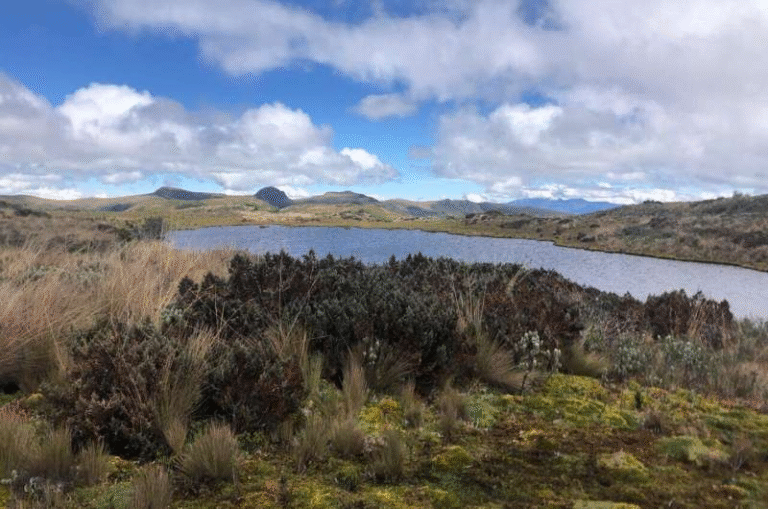Midwest Storms Are Carrying Wildfire Smoke Into the Stratosphere

Powerful summer storms in the U.S. Midwest are doing something scientists never expected—they’re punching holes through the upper atmosphere and sending wildfire smoke into the stratosphere, a layer of air that was once thought to be largely untouched by life and pollution on Earth’s surface.
This surprising finding comes from new research led by Dan Cziczo and Xiaoli Shen from Purdue University, in collaboration with NASA, and published in Nature Geoscience (2025). Using a high-altitude research aircraft, the team discovered that severe thunderstorms—sometimes called “overshooting storms”—are strong enough to break through the boundary that separates the troposphere (the layer we live in) from the stratosphere. And when they do, they carry aerosols, burning biomass, and pollution high above where they should ever reach.
The results raise a big question for climate scientists: what happens when wildfire smoke, full of carbon-rich particles, enters a zone of the atmosphere that protects life on Earth from the Sun’s harsh radiation?
How the Stratosphere Got “Dirty”
To understand how unusual this discovery is, it helps to know what the stratosphere actually is. This layer of air sits just above the weather-filled troposphere, beginning around 10 to 12 kilometers (33,000 to 40,000 feet) up and extending to about 50 kilometers (31 miles) above the surface. The stratosphere is home to the ozone layer, which shields us from most of the Sun’s ultraviolet light.
Normally, the air in the stratosphere doesn’t mix much with the troposphere below. The word “stratosphere” literally comes from “stratified,” meaning it’s layered and stable. Because of that, it has long been considered a pristine and protected region of the atmosphere—only disturbed by rare, major events like volcanic eruptions or meteor strikes.
But the new study shows that climate change is altering this balance. Increasingly intense wildfires in the western United States and powerful summer thunderstorms in the Midwest are working together in an unexpected way: fires produce smoke particles, and storms act as vertical transport systems, hurling that smoke upward into the stratosphere.
The Midwest Has Its Own “Monsoon”
When we think of a monsoon, most of us picture India or Southeast Asia. But the researchers point out that North America has its own version, sometimes called the North American Monsoon. During the summer, warm, humid air from the Gulf of Mexico flows northward, colliding with cooler, drier air masses near the Rocky Mountains. The result? A season of explosive thunderstorms across the Great Plains and Midwest.
These storms are not just rainmakers—they are atmospheric engines. Sometimes, the updrafts inside them become so intense that their tops burst through the tropopause, the invisible ceiling separating weather from the stable stratosphere.
When that happens, the storm produces what meteorologists call an “overshooting top.” Imagine a geyser of cloud and wind, pushing pollutants, dust, and smoke miles above their usual range. The Purdue and NASA team found that during strong summer storms, smoke particles from distant wildfires were being carried all the way into the lower stratosphere.
The NASA ER-2 Aircraft: Flying on the Edge of Space
To measure this phenomenon, NASA used a modified Lockheed Martin U-2 spy plane known as the ER-2, short for Earth Resources-2. Unlike its military ancestor, this aircraft is a flying science lab. It’s designed to measure aerosols, humidity, temperature, and chemical composition at extreme altitudes—up to 70,000 feet (21 kilometers), higher than 95% of Earth’s atmosphere.
During the study, the ER-2 flew dozens of missions over Kansas, Wisconsin, Illinois, Indiana, and parts of Texas, sampling the air near storm systems. Its sensors picked up evidence of biomass-burning particles—tiny carbon-sulfate aerosols—from wildfires that had traveled hundreds of miles.
The team found that in some regions, up to 90% of the particles in a 4-kilometer-thick layer above the tropopause came from the troposphere below. And of those particles, about 43% could be traced directly to wildfire smoke.
That’s an enormous amount of foreign material entering a zone of the atmosphere that was supposed to be largely sealed off.
Two Ways Smoke Reaches the Stratosphere
The researchers identified two main pathways by which wildfire smoke reaches such high altitudes:
- Pyrocumulonimbus events: When a wildfire grows large enough, it can actually generate its own thunderstorm. These fire-driven clouds can catapult smoke, ash, and heat directly into the stratosphere. This happened dramatically during Australia’s 2019 bushfire season, when massive smoke plumes reached heights similar to volcanic eruptions.
- Convective storms acting as elevators: In years with widespread fires, smaller storms across large regions—like the Midwestern monsoon systems—can cumulatively inject significant amounts of biomass-burning aerosols upward over time.
Either way, the end result is the same: the stratosphere becomes polluted with particles that were never supposed to be there.
Why This Discovery Matters
These findings might sound abstract, but they have serious implications for both climate and ozone protection. The stratosphere regulates how heat and radiation are distributed around the planet. It’s also the layer where the ozone layer resides, which absorbs harmful ultraviolet rays.
Introducing soot, organic carbon, and sulfates from wildfires could affect:
- Radiation balance: Some of these particles absorb sunlight, heating the stratosphere and potentially altering circulation patterns. Others reflect sunlight, which can cool the surface but destabilize atmospheric layers.
- Ozone chemistry: Aerosols provide surfaces where chemical reactions can occur, possibly accelerating ozone depletion. Even small disturbances can shift the delicate chemistry that protects Earth from UV radiation.
- Climate feedback loops: If warming leads to more wildfires, and those fires further alter the upper atmosphere, it could create self-reinforcing cycles that amplify long-term climate impacts.
The researchers emphasize that the effects are not catastrophic—at least not yet. But they represent a new kind of atmospheric disruption, one that climate models haven’t fully accounted for.
The Big Picture: Stratospheric Aerosols and Climate
The discovery connects to a broader scientific story about stratospheric aerosols—tiny particles suspended high in the air that can influence Earth’s climate for months or even years.
Historically, the biggest natural source of stratospheric aerosols has been volcanoes. When a volcano erupts, sulfur dioxide gas reacts with water vapor to form sulfate aerosols, which can cool the planet by reflecting sunlight. The 1991 eruption of Mount Pinatubo, for example, temporarily lowered global temperatures by about 0.5°C.
Wildfire smoke works differently. Instead of mostly sulfates, it contains black carbon, organic compounds, and nitrates—materials that tend to absorb sunlight rather than reflect it. That means they can warm the stratosphere rather than cool it.
Scientists are still investigating how long these wildfire-derived particles remain aloft and how strongly they influence radiative forcing. But early evidence suggests their impact could be nontrivial, especially if climate change keeps making fires more severe and frequent.
How It Changes Atmospheric Science
For decades, textbooks described the stratosphere as a stable and isolated region, with very little upward mixing. The new data challenge that assumption.
Cziczo and his team showed that the lower stratosphere—roughly the first 4 kilometers above the tropopause—is not as isolated as once thought. It’s a dynamic zone that can now be affected by human-driven changes at the surface.
That has implications for how we:
- Model climate systems: Most climate models might underestimate the impact of biomass-burning aerosols on high-altitude chemistry and heating.
- Understand ozone recovery: Even as international agreements like the Montreal Protocol have helped heal the ozone layer, new disturbances from smoke and aerosols could modify or delay that recovery in localized regions.
- Assess geoengineering risks: Some proposed climate engineering methods—like injecting aerosols into the stratosphere to reflect sunlight—need to account for how natural injections (fires and storms) already modify that layer.
The Road Ahead
The researchers are careful not to claim that this is an immediate atmospheric crisis. Instead, they see it as a warning sign that the stratosphere’s chemistry and dynamics are changing faster than expected.
Future studies will focus on:
- Quantifying how often these injection events occur.
- Determining how long wildfire smoke particles remain in the stratosphere.
- Measuring chemical transformations that occur once they’re up there.
- Modeling potential feedback loops between surface warming, fire frequency, and atmospheric composition.
Because this process involves the interaction of multiple systems—climate, weather, fire ecology, and atmospheric physics—it could become a key piece in understanding future climate behavior.
Related Concepts: Overshooting Tops and Pyrocumulonimbus Clouds
Overshooting tops are among the most visually striking phenomena in meteorology. These dome-shaped bulges at the top of thunderclouds form when an updraft is so strong that it penetrates the tropopause. They often signal extremely powerful storms, capable of producing hail, tornadoes, and even stratospheric injections.
Pyrocumulonimbus clouds—nicknamed pyroCbs—are a different but related phenomenon. They occur when the heat from large wildfires causes air to rise violently, forming thunderclouds directly above the fire. These clouds can inject smoke 10–20 kilometers into the atmosphere and even generate lightning, which can start new fires.
Both of these mechanisms are now seen as contributors to the “fire-smoke highway” leading into the stratosphere.
A New Chapter for Atmospheric Research
The study’s findings remind us that Earth’s atmosphere is more interconnected than we thought. Pollution and heat released at the surface can influence layers once thought unreachable. The Midwest’s storms and the West’s fires are no longer separate stories—they’re part of the same climate system, and their combined effects could shape the chemistry of the sky itself.
As Cziczo’s team continues to study these changes using NASA’s ER-2 and other instruments, scientists around the world are watching closely. Understanding how smoke and aerosols behave in the stratosphere could become crucial for predicting climate patterns, protecting the ozone layer, and anticipating future atmospheric feedbacks in a warming world.
Research Reference:
Shen, X., Cziczo, D., et al. (2025). Stratospheric aerosol perturbation by tropospheric biomass burning and deep convection. Nature Geoscience. DOI: 10.1038/s41561-025-01821-1





